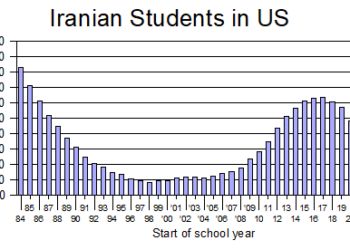Iran has held the top rung since 2006. In 2005, North Korea and Iraq tied for first place.
The results are based on Gallup’s annual World Affairs poll.
American perceptions of the “greatest enemy” are generally responsive to international events, the Gallup organization commented. For example, this year marks a sharp decline to 7 percent in the percentage of Americans who believe Iraq is the greatest US enemy, down from at least 21 percent in each measurement from 2005-2008, and 38 percent in 2001 before the Iraq war. The decline this year coincides with the reduction of US military forces in Iraq, Gallup noted.
As Americans became less likely to view Iraq as the United States’ greatest enemy after the beginning of the Iraq war, they became more likely to see Iran and North Korea that way.
Now, with military operations in Afghanistan the largest US engagement, the percentage of Americans naming that country as the greatest enemy has reached a new high of 9 percent.
Interestingly, younger Americans are much less likely than older Americans to regard Iran as the country’s greatest enemy and more likely to view North Korea this way. Americans under 40 do not personally remember the hostage episode of 1979-81.
Those older than 50 see Iran as the greatest enemy by twice the margin of those younger than 50.
North Korea tops Iran as the greatest enemy in the 18-to-29 age group. Americans aged 30 to 49 are about equally likely to mention North Korea, Iran and China as the greatest US enemy. Above, 50, Iran has no competition.
Turning to ideology, those who call themselves conservatives are twice as likely to name Iran as any other country as the greatest enemy of the United States. Liberals are about evenly divided as to whether Iran or North Korea is Number One. And moderates are equally likely to assign China, Iran, and North Korea this status.
These differences are not apparent by political party, however, as Iran is perceived to be the top US enemy by Republicans, Democrats and independents.
Results for this Gallup poll are based on telephone interviews conducted Feb. 2-5, 2011, with a random sample of 1,015 adults, aged 18 and older, living in the continental US. For results based on the total sample of national adults, Gallup says with 95 percent confidence that the maximum margin of sampling error is plus-or-minus 4 percentage points.


















